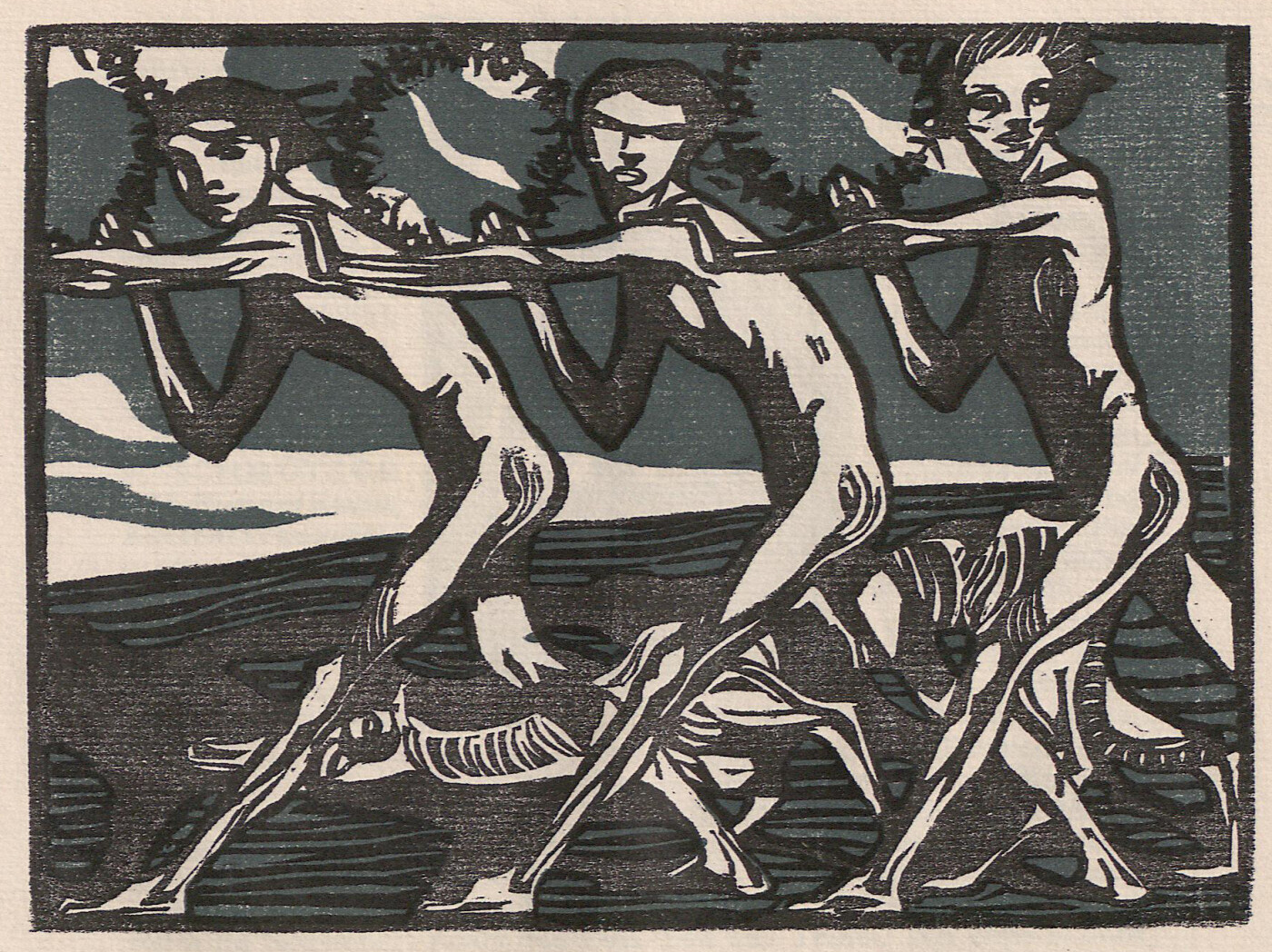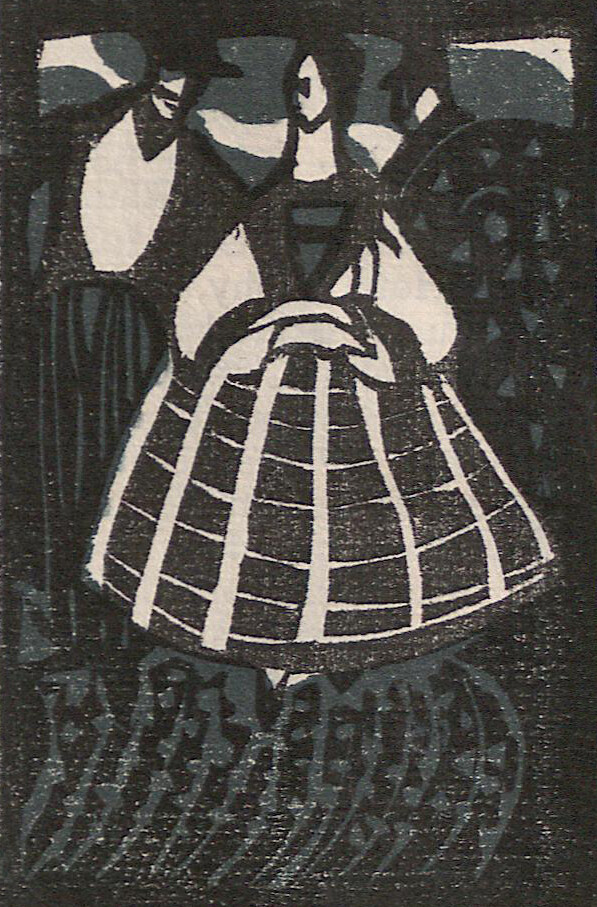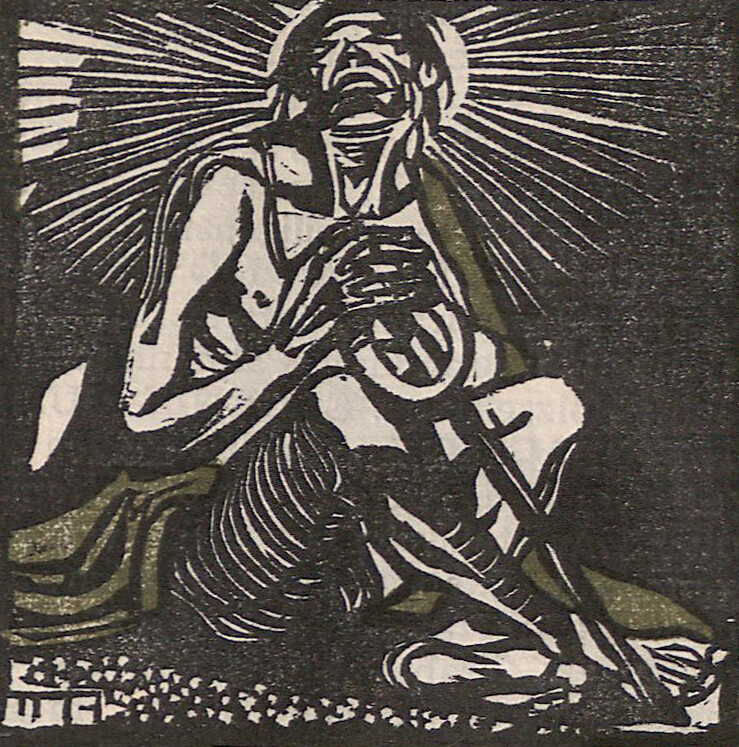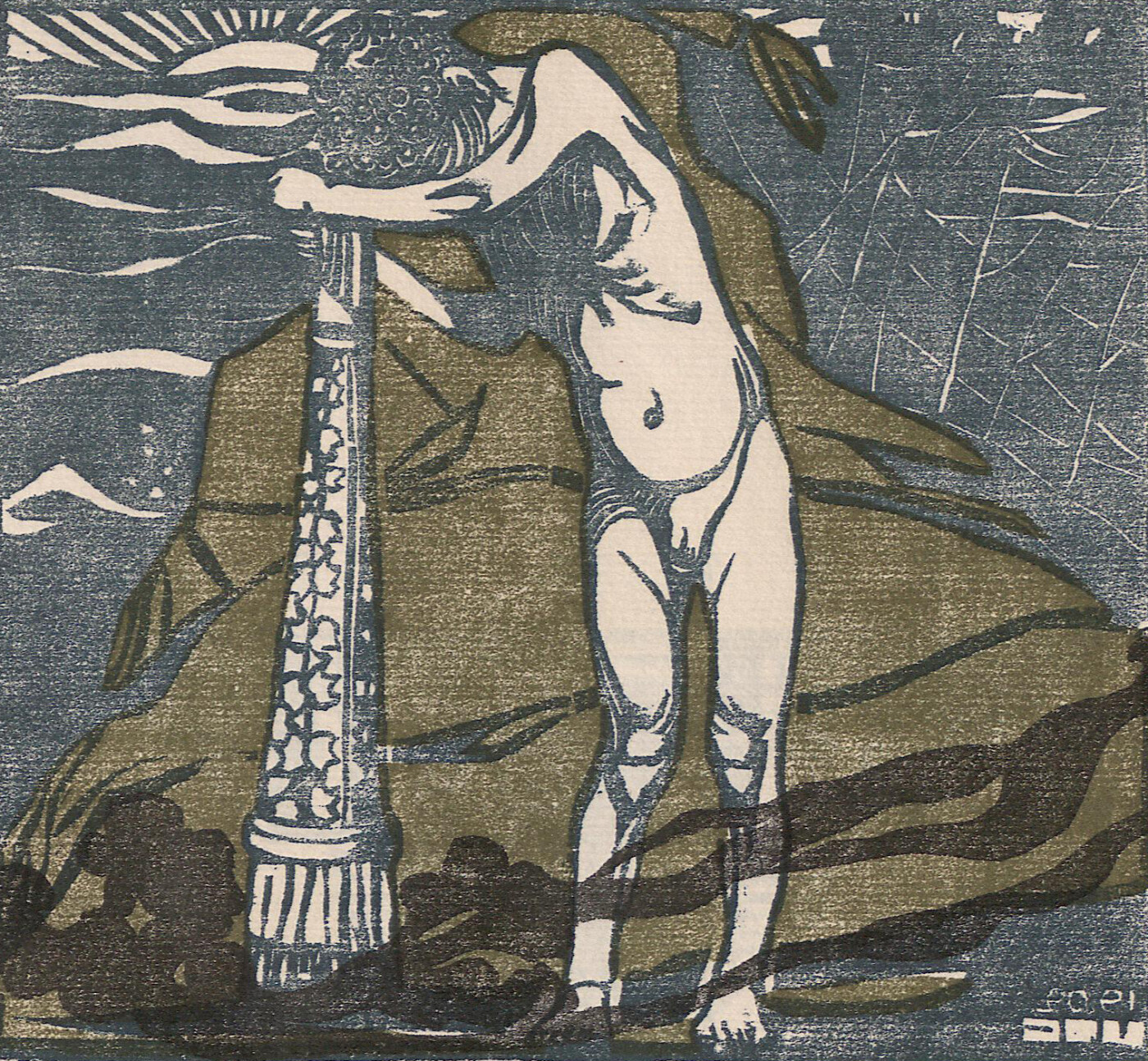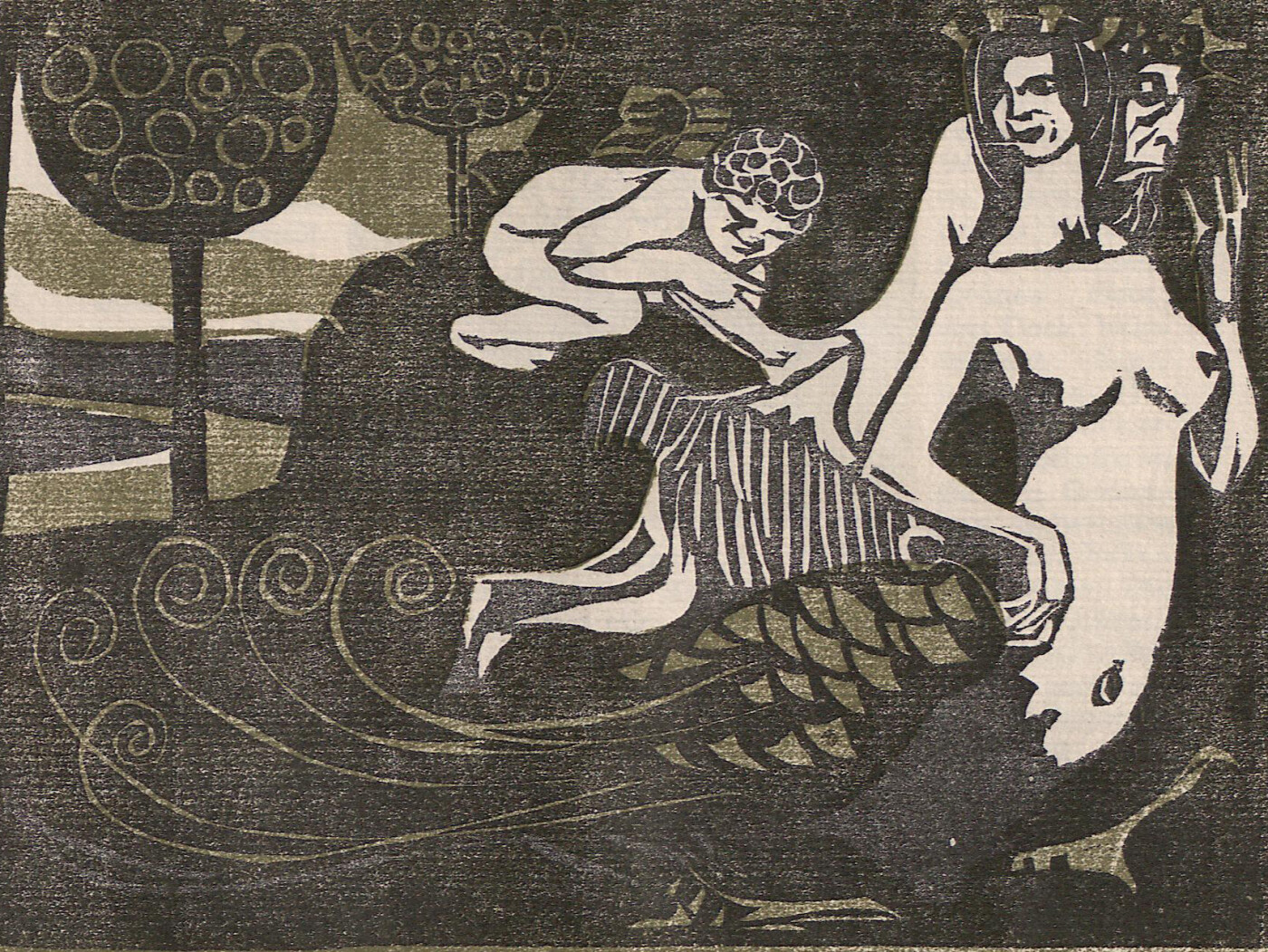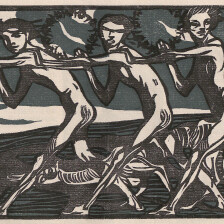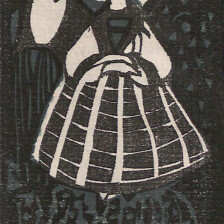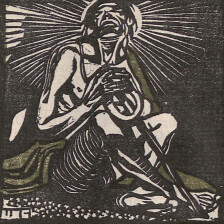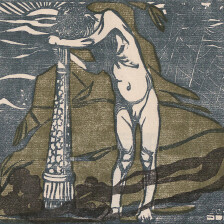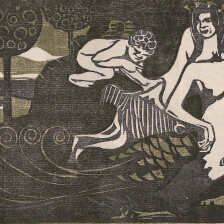Elena Luksch-Makowsky
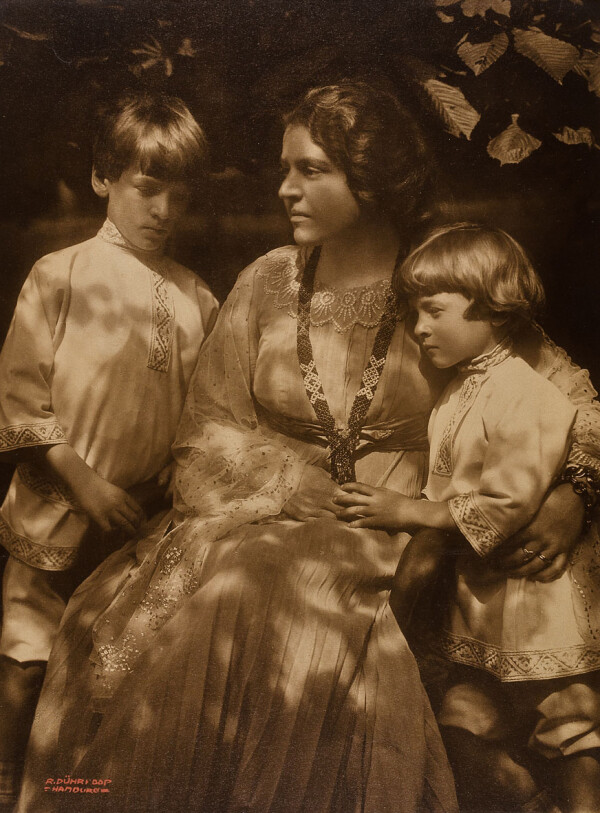
Elena Luksch Makowsky with her two sons Peter and Andreas photographed by Peter Dührkoop, 1907, Museum für Kunst und Gewerbe Hamburg (MK&G)
© Museum für Kunst und Gewerbe Hamburg
The Russia-born painter, sculptor, graphic artist and artisan craftswoman Elena Luksch-Makowsky was active for the Wiener Werkstätte, the Secession and for the “Kunstschau 1908,” and thus made important contributions to Viennese Jugendstil.
Elena Makowsky was born on 13 November 1878 into a well-to-do family of artists in St. Petersburg. Her father was the court painter Konstantin Makovsky. Through her parents, she came into contact with various artists early on, and traveled all over Europe.
Makowsky initially studied from 1894 to 1896 at the St. Petersburg Academy under the painter Ilya Repin. Seeing as her teacher belonged to the school of painters known as Peredvizhniki (The Itinerants), her early oeuvre was heavily influenced by the type of down-to-earth Realism espoused by them. Thanks to a scholarship, she was able to take painting lessons in 1898 in Munich at the Ažbe School, a private school for figure and portrait painting run by the artist Anton Ažbe.
At Deutenhof Studio in Dachau, Makowsky came into contact with the exponents of the “New Dachau” art school, Adolf Hölzel and Ludwig Dill. During her time spent in Dachau, she met the Viennese sculptor Richard Luksch to whom she got engaged prior to her return to St. Petersburg. Having discovered her interest in sculpture in Germany – not least on account of her relationship with Richard Luksch – Elena decided to take lessons in her hometown under the sculptor Vladimir Beklemishev.
Makowsky’s first paid commission was an installation for her benefactor Johann von Bloch, which was shown at the Vienna World’s Fair in 1900. That same year, she married Richard Luksch and moved back to Dachau. The artist fell pregnant shortly after her wedding.
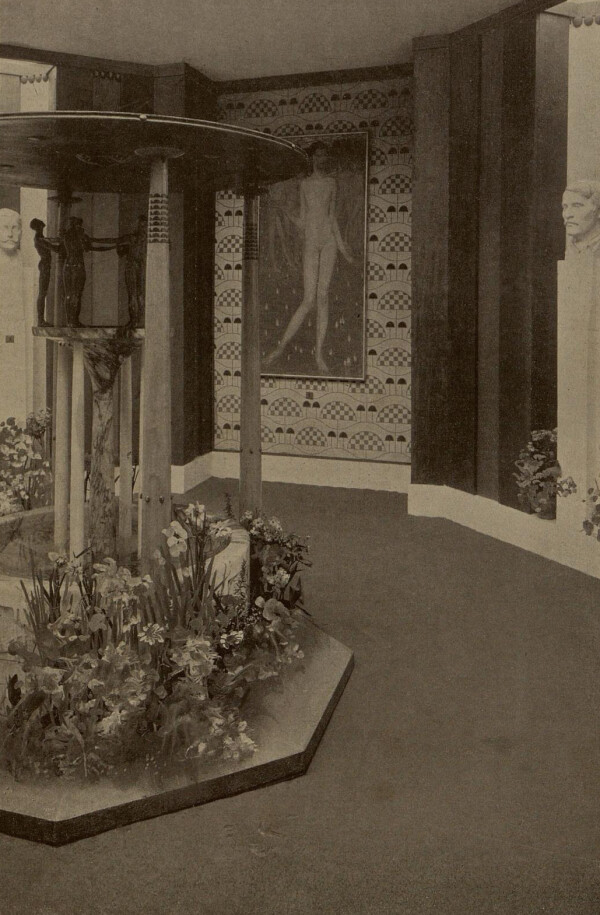
Elena Luksch-Makowsky's painting Adolescentia next to her husband Richard Luksch's fountain at the XVII Secession Exhibition, 1903, in: Das Interieur. Wiener Monatshefte für angewandte Kunst, 4. Jg. (1903).
© ANNO | Austrian National Library
Elena Luksch-Makowsky and the Vienna Secession
In November 1900, Elena Luksch-Makowsky – as she called herself after her wedding – participated in the “VIII. Secessionsausstellung” [“8th Exhibition of the Vienna Secession”] in Vienna. While her husband had participated in previous exhibitions, it took Elena a while to establish herself in the Viennese art scene. It wasn’t until the “X. Secessionsausstellung” [“10th Exhibition of the Vienna Secession”] in 1901 that the artist was mentioned in press reviews. Her three Impressionist genre paintings were enthusiastically received by the public, especially the work The Cat Eater (1900, Belvedere). The same year, Luksch-Makowsky and her husband moved to his hometown of Vienna.
From 1901 to 1905, the artist repeatedly took part in the exhibitions of the Secession. In 1903, her work was exhibited in a room that also displayed a fountain sculpted by her husband, which meant that her art entered into direct comparison with his. Her painting Adolescentia (1903, Belvedere, Vienna) attracted a lot of attention and was discussed in detail in several reviews. The exotic Russian traits of her art, which the artist had preserved from her early education, were especially well received by the male-dominated circles of Viennese Jugendstil. One of the signs of their appreciation towards her was that she was the only woman artist to have her own Secession monogram. It was created for the “XIV. Secessionsausstellung. Klinger-Beethoven” [“14th Exhibition of the Vienna Secession. Klinger-Beethoven”] to which she made a considerable contribution by providing decorative panels.
Along with her exhibition activities, Luksch-Makowsky also contributed numerous graphic works to the Secession’s art magazine Ver Sacrum.
Woodcuts for Ver Sacrum
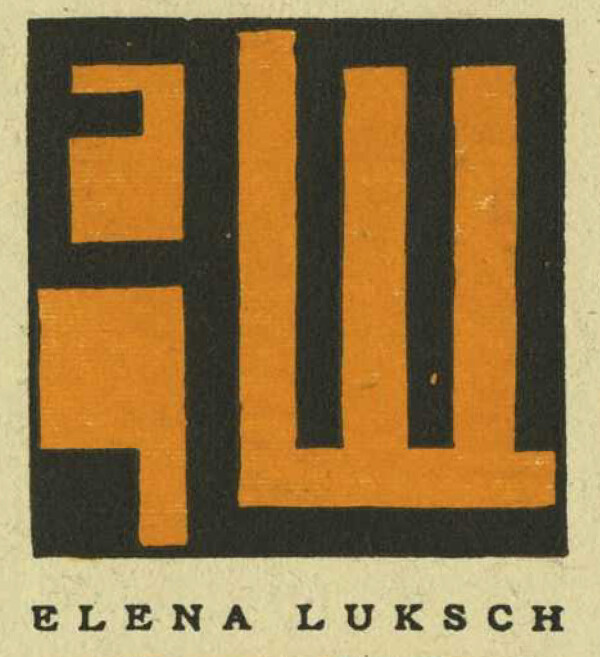
Elena Luksch-Makowsky's signet for the Beethoven exhibition at Association, 1903, in: Vereinigung bildender Künstler Österreichs Secession (Hg.): XIV. Ausstellung der Vereinigung bildender Künstler Österreichs Secession. Klinger Beethoven, Ausst.-Kat., Secession (Vienna), 15.04.1902–15.06.1902, Vienna 1902.
© Klimt Foundation, Vienna
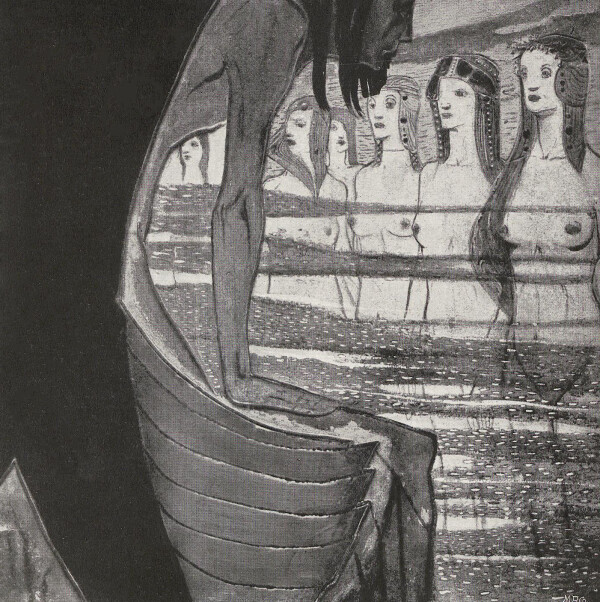
Elena Luksch-Makowsky: Relief for the Beethoven exhibition at Association, 1902, in: Deutsche Kunst und Dekoration, Band 10 (1902).
© Heidelberg University Library
Klimt-Group and Kunstschau
In 1905, the married couple joined the Klimt-Group and left the Secession. Luksch-Makowsky also repeatedly created artisan craftwork for the Wiener Werkstätte, predominantly small items of furniture and metal repoussé work.
In 1906, Elena took over her husband Richard Luksch’s prestigious commission to create ceramic reliefs for the Vienna Bürgertheater. Working to capacity for the decoration of Sanatorium Purkersdorf, he left the execution of this public commission to his wife. She kept this a secret until the commissioners came to view the finished work. Realized in only three months, the plates of the work Melpomene and the Tragic Chorus (1906, Museum für Kunst und Gewerbe Hamburg) are among Luksch-Makowsky’s chief works.
When Richard Luksch accepted a professorship at the Hamburg Art School in 1907, the couple and their two sons moved to Germany. The married couple kept working for the Wiener Werkstätte, and thus remained rooted in the Viennese art scene. Along with contributions to the large-scale project of the Palais Stoclet – for which Gustav Klimt created his famous work The Stoclet Frieze (1904–1911, Belvedere) – the Lukschs also participated in the 1908 “Kunstschau Wien” exhibition, organized by the Klimt-Group. Elena featured in the exhibition with a ceramic figure, a fan and numerous illustrations, in which she adopted the Russian tradition of lubok (popular prints). Her entire output around 1908 was shaped by her renewed interest in the art of her homeland, and by a recourse to Russian motifs and themes.
Thus, it is hardly surprising that the artist traveled to St. Petersburg in 1909 to participate in the first exhibition of her brother Sergey Makovsky’s salon.
The Hamburg Period
In 1910, Elena Luksch-Makowsky created the faience sculpture Fate of a Woman (Kunsthalle Hamburg) for Hamburg city park. The work’s commissioner, the architect, town planer and university professor Fritz Schumacher, interpreted the sculpture as follows in his 1928 work Plastik im Freien – Versuche im Betrachten von Kunstwerken:
“[…] you can see that the woman is firmly bound to the ground by her children. She cannot go wherever she wants, she cannot move the way she wants to […]. Her head, however, she can move freely. Up there in the intellectual sphere, we sense the existence of another world. […] We feel the conflict of a woman, whose soul could fly off into the realm of imagination, but whose real existence is tied to the demands of her role as a mother: The fate of a woman.”
As a woman artist, Luksch-Makowsky invariably addressed problems which hardly mattered to her male colleagues. The issue of motherhood, and the resulting limitations on a woman’s scope for professional development, was always present in her work. Along with her national identity as a Russian, Luksch-Makowsky’s main theme was the role of wife and mother ascribed to her by society as opposed to her career in the male-dominated art world. In her sculpture Fate of a Woman, she focused all these conflicts into a monumental work.
Divorce and World Wars
The Russian-born artist was hit particularly hard by the outbreak of World War I in 1914, as her adopted nation was now at war with her native country and home of her family. Maintaining contact with her family had become difficult. Additionally, Richard Luksch fell seriously ill in 1915. He needed to spend an extended period of time in hospital, leaving Elena as the family’s sole provider. During this time, she predominantly created portrait busts of acquaintances and relatives.
In 1921, the marriage between Richard Luksch and Elena, which had already undergone several crises, came to an end. When she found out her husband had an affair, she filed for divorce.
After her divorce, Luksch-Makowsky placed a renewed emphasis on her homeland in her art. Almost all her works made reference to Russia. Around 1925, she created the work Group of Prisoners, which was intended as a memorial for Russian prisoners of war. Without support from her husband, Elena had to be all the more proactive when it came to receiving public and private commissions. In this context, she created the draft for the distinction awarded by the Senate of Hamburg, Medaille für treue Arbeit im Dienste des Volkes [Medal for Faithful Service to the People] (1926), and for two fountains for a primary school dedicated to Carl Friedrich Meerwein (1930). She also increasingly focused on commercial art in order to protect herself and her family financially.
During World War II, the artist gave private art lessons, took on private portrait commissions – which often served as direct payment methods – and until 1965, regularly participated in various exhibitions.
Elena Luksch-Makowsky died on 15 August 1967 in Hamburg. Her tombstone is adorned with a motif from her three-part series of lithographs The War.
Literature and sources
- Wien Geschichte Wiki. Elena Luksch-Makowsky. www.geschichtewiki.wien.gv.at/Elena_Luksch-Makowsky (04/22/2020).
- Garten der Frauen. Elena Luksch-Makowski. www.garten-der-frauen.de/kunst.html (04/22/2020).
- Sammlung belvedere. sammlung.belvedere.at/people/1315 (04/22/2020).
- Stella Rollig, Sabine Fellner (Hg.): Stadt der Frauen / City of Women. Künstlerinnen in Wien 1900–1938 / Female Artists in Vienna 1900–1938, Ausst.-Kat., Lower Belvedere (Vienna), 25.01.2019–19.05.2019, Munich - New York - Vienna 2019.
- Athina Chadzis: Die Malerin und Bildhauerin Elena Luksch-Makowsky (1878 – 1967). Biografie und Werkbeschreibung. Dissertation, Hamburg 2000.
- Neue Freie Presse, 31.03.1903, S. 1.
- Simone Ewald: The Artist Elena Luksch-Makowsky. Between St. Petersburg, Munich, Vienna and Hamburg, in: Tanja Malycheva, Isabel Wünsche (Hg.): Marianne Werefkin and the Women Artists in Her Circle, Boston 2017, S. 175-189.


